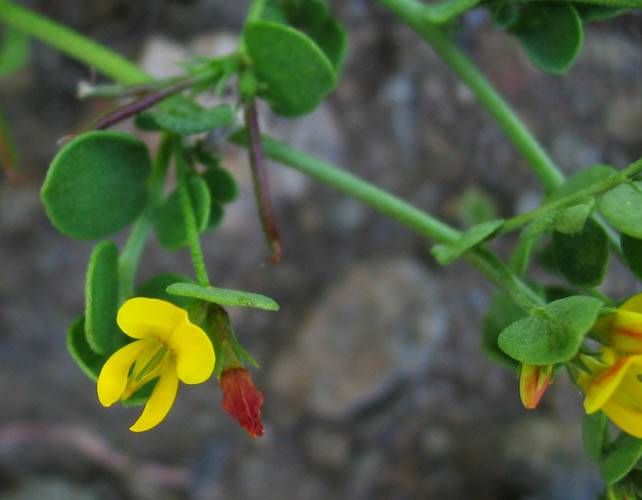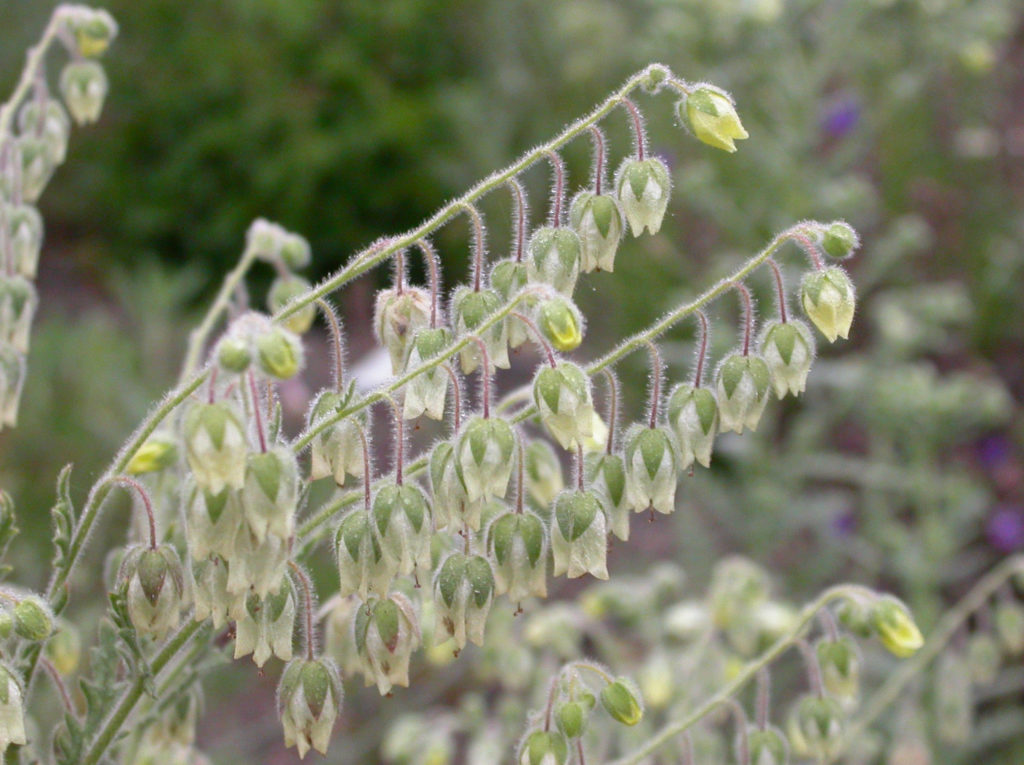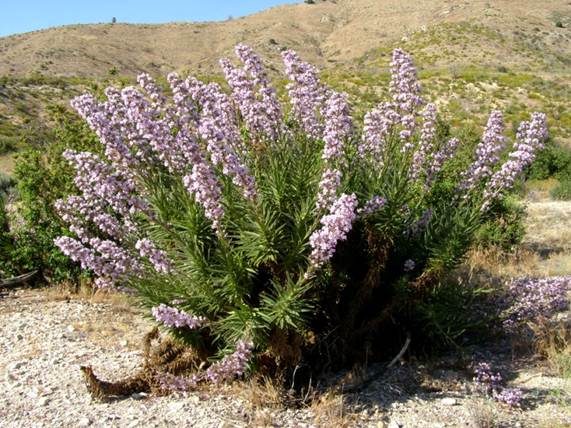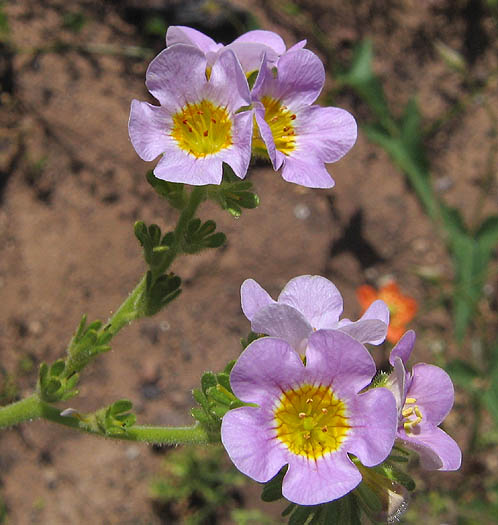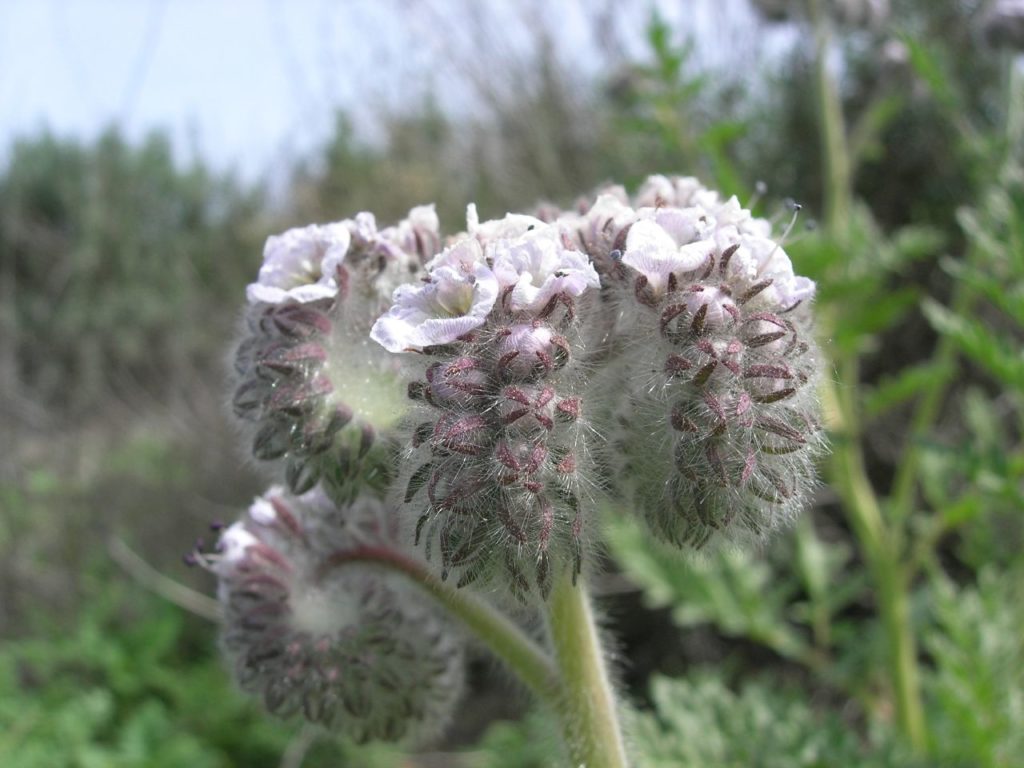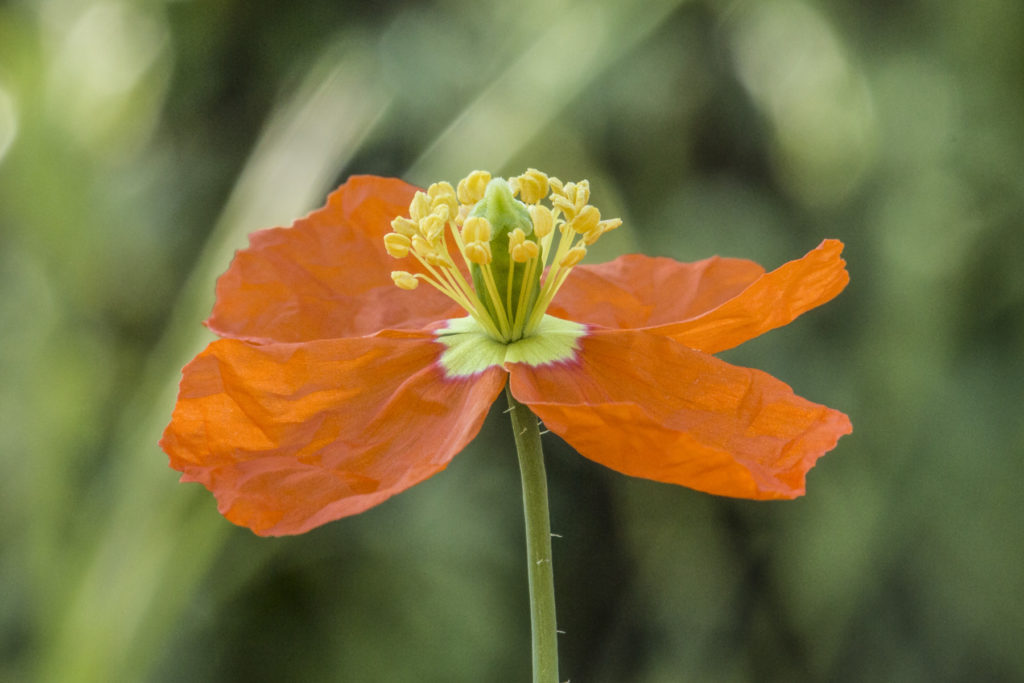The unique chaparral ecosystem in California is one of the few Mediterranean climate ecosystems found throughout the world. Chaparral dominates the landscapes in and around the Los Padres National Forest, and it is adapted to large, intense but infrequent fires (approximately every 30 – 150 years). Once areas in our region burn during a wildfire, a spectacular event takes place in the days, months, and years following. Specialized plant species responding to environmental cues like charred soil, smoke, and increased sunlight emerge from the soil in areas scorched by fire. These “fire followers” begin their growth cycle soon after the fire is out, especially once the rains come. Below we look at some of the species considered to be fire followers, examining their important role in ecosystem recovery and their often unusual characteristics.
Coastal Lotus
Acmispon maritimus
This annual legume can be found along California’s central and south coasts as well as southeastern parts of the state. It is commonly found in recently-burned areas as it is stimulated by heat shock. Coastal lotus — sometimes referred to as coastal bird’s-foot trefoil — can grow up to 1.5 feet tall, and its yellow flowers bloom between March and June.
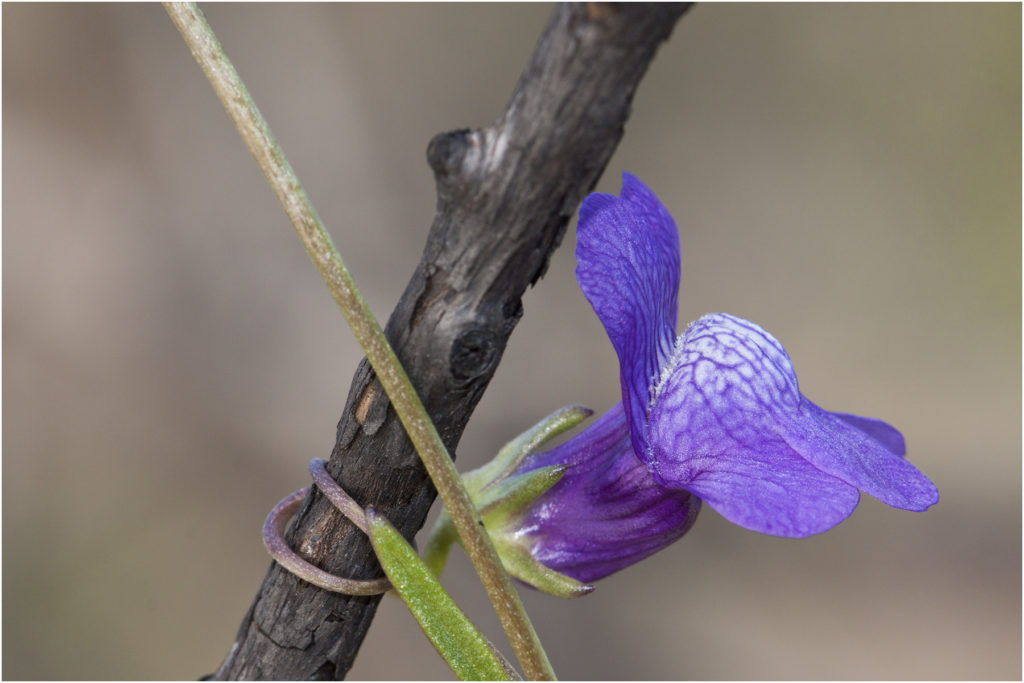
Twining snapdragon wrapped around a charred branch in an area that was recently burned. Photo by Marlin Harms.
Twining Snapdragon
Antirrhinum kelloggii
A small, viny herbaceous plant, the twining snapdragon (also known as the Kellogg snapdragon, named after 19th century California botanist Albert Kellogg) is commonly found in recently-burned areas in our region. When walking through a seemingly charred and barren landscape, you might see this annual wrapped around a blackened shrub skeleton.
Whispering Bells
Emmenanthe penduliflora
The only species in its genus, whispering bells is a common wildflower throughout much of California and western North America. This annual herb can grow up to nearly three feet tall. Stimulated by heat shock, whispering bells is often seen in areas that have recently burned. Its characteristic bell-shaped flowers are clustered and hang from the stem, blooming between February and June. When the flowers dry, they become dry and light, producing a rustling sound in a breeze — hence the name whispering bells.
Poodle-dog Bush
Eriodictyon parryi
While you may find the poodle-dog bush’s name interesting or its odd leaves and flowers pretty, you definitely do not want to get up close and personal with this fire follower. Also known as turricula, poodle-dog bush produces a serious skin irritant that can produce rash symptoms similar to those produced by poison oak. This perennial herb is often seen in burn areas in the eastern part of the Los Padres National Forest and in other parts of southern California. It can grow up to 10 feet tall and has showy purple flowers blooming between May and August. So next time you are hiking through an area that burned within the last few years, be sure to look out for this strange plant — and don’t touch it if you find it!
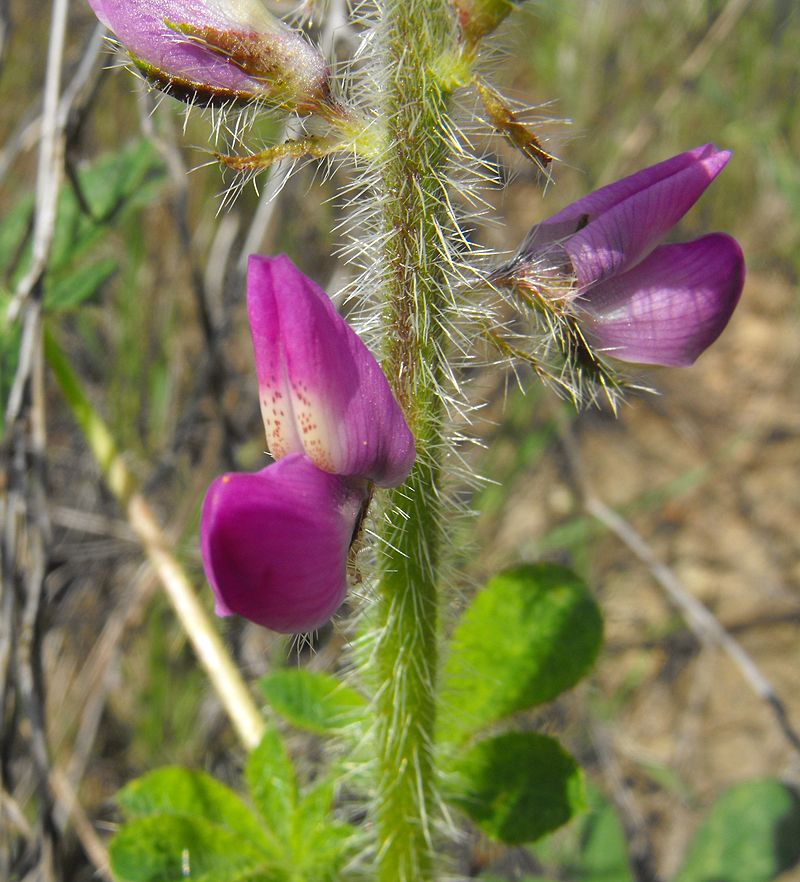 Stinging Lupine
Stinging Lupine
Lupinus hirsutissimus
This annual legume can be seen on dry mountain slopes from Monterey to Baja California, especially after a fire has swept through an area. Its common name comes from the long and stiff hairs on its stem that will “sting” you when touched. The plant is generally 1 – 3 feet tall. Look for the stinging lupine’s beautiful purple blooms between March and May.
Shortlobe Phacelia
Phacelia brachyloba
An annual herb, the shortlobe phacelia is often seen emerging from burned areas, the shortlobe phacelia can be found in the coastal mountains between Monterey and Baja California. It can grow up to two feet tall, producing clusters of pinkish-purple flowers only one centimeter wide that bloom during April and May.
Caterpillar Phacelia
Phacelia cicutaria
This annual species of phacelia can be found in the foothills and mountains of California’s central and south coasts as well as the foothills of the western Sierras. Like many fire followers, caterpillar phacelia is stimulated by heat shock. The plant can grow up to two feet tall and is covered in bristly hairs. Its flowers are white to purple and bloom between March and May. The name “caterpillar” comes from the appearance of the coiled clusters of flower buds that elongate before blooming.
Large-flowered Phacelia
Phacelia grandiflora
Another annual herb commonly seen in burn areas, the large-flowered phacelia can only be found between Santa Barbara County and northern Baja California. It typically reaches between one and three feet in height and is covered in hairs like other phacelia species. Similar to the caterpillar phacelia, this species is stimulated by heat shock. Its name comes from the 1 – 2 inch wide purple flowers that can be seen between February and June.
Fire Poppy
Papaver californicum
Found mostly along the central and south coasts of California between Monterey and San Diego, the fire poppy is an aptly-named annual herb that is often seen growing in recently-burned areas. Not to be confused with the California poppy — the state flower — this orange-flowered plant can reach 1 – 2 feet tall. It’s characteristic four-petaled flower blooms between April and May.
Want to learn more about wildfire ecology in and around the Los Padres National Forest? Visit Fire in Our Region to read about how humans are changing wildfire and what approaches work to reduce the impacts of fire on our communities.

